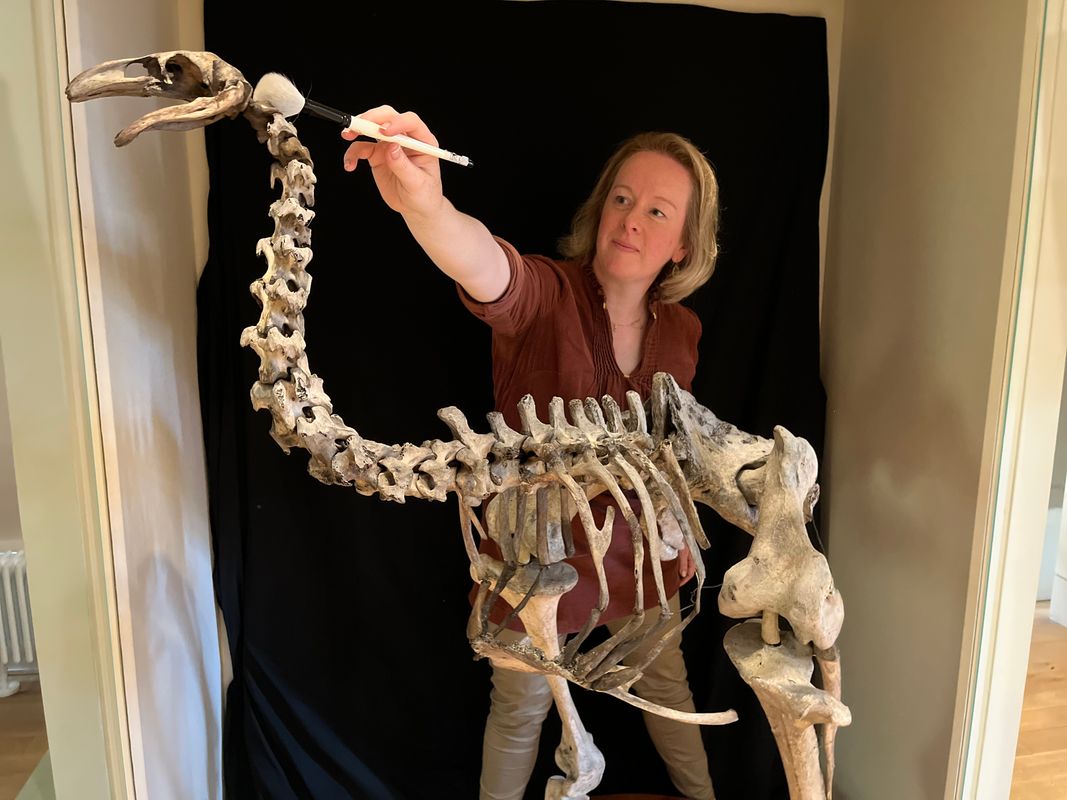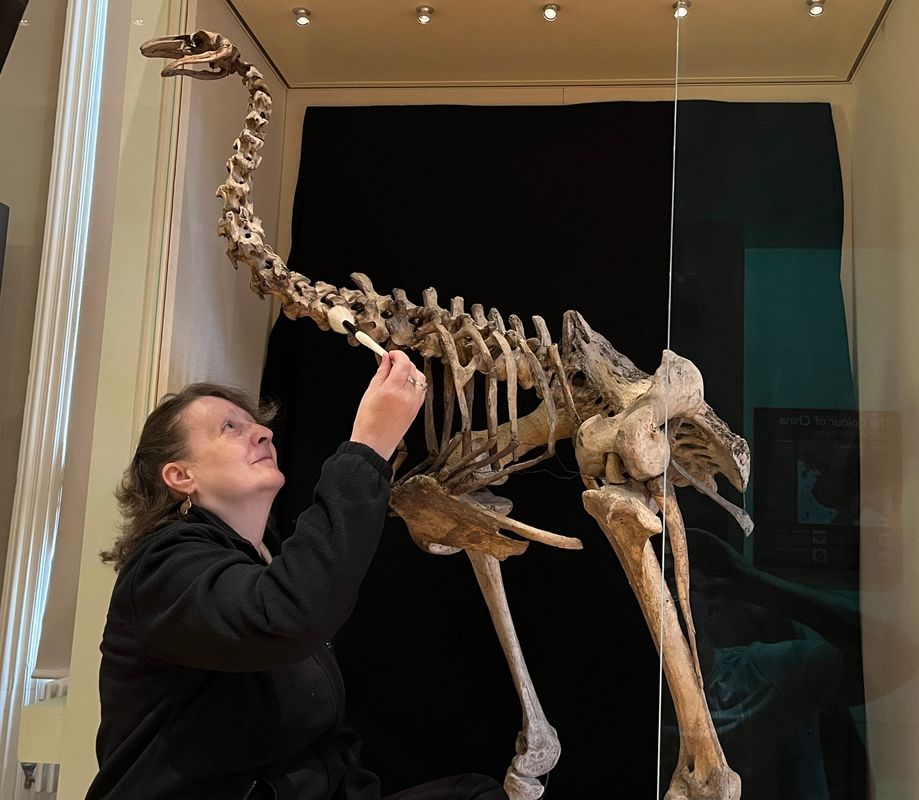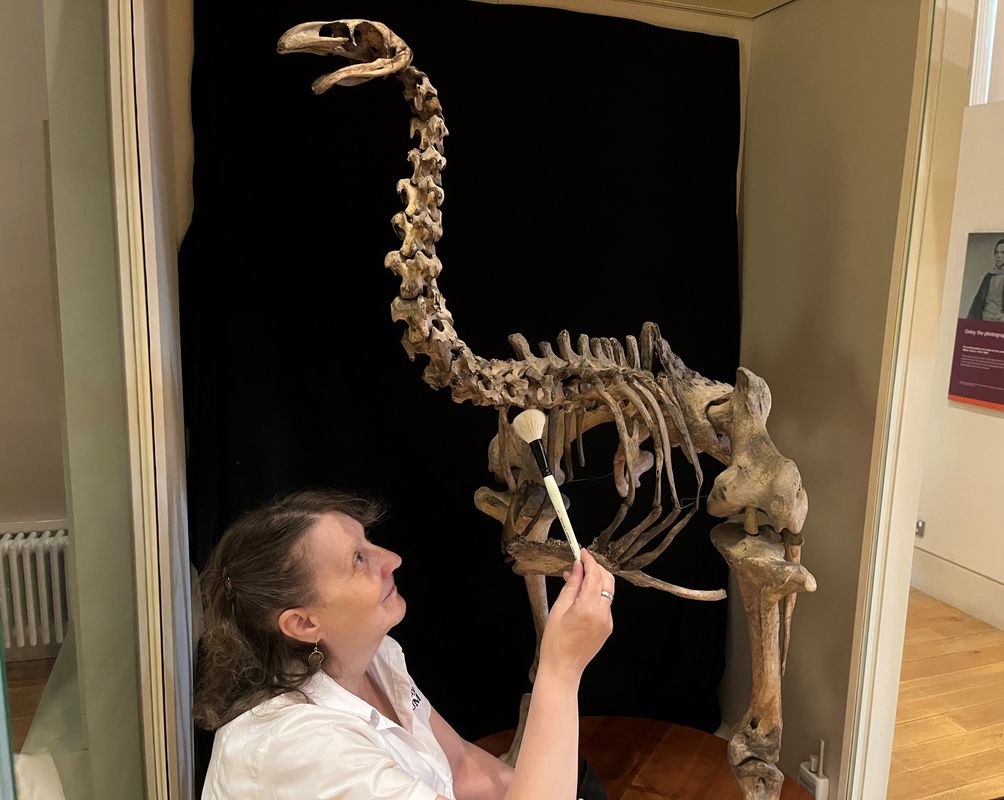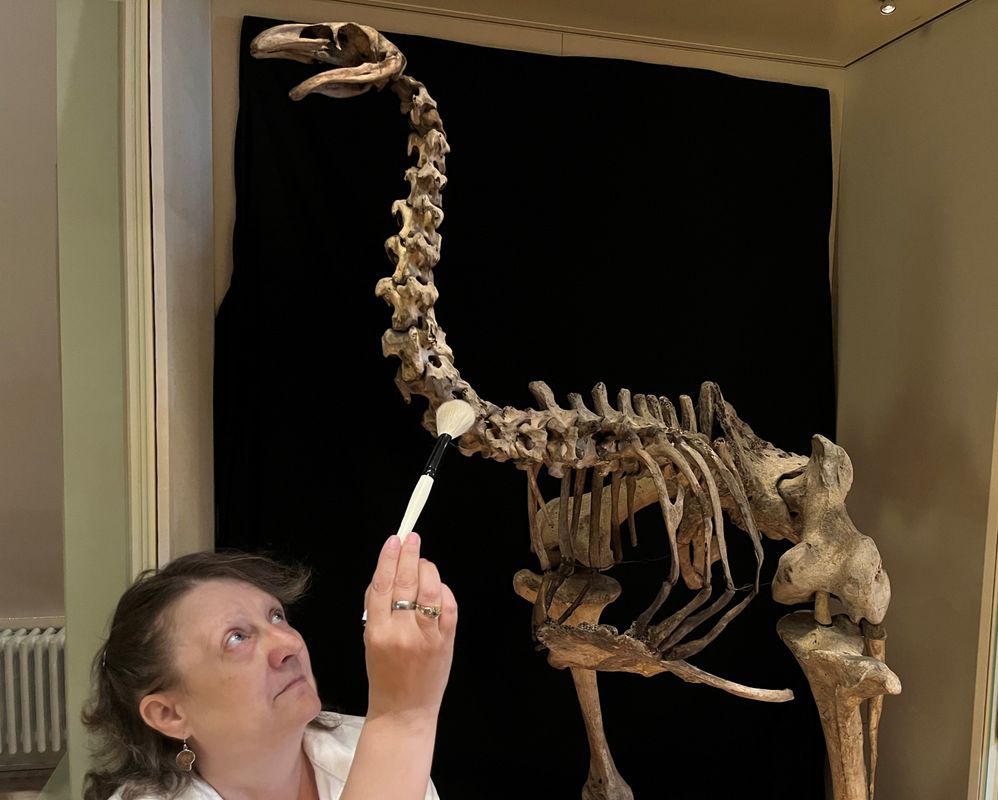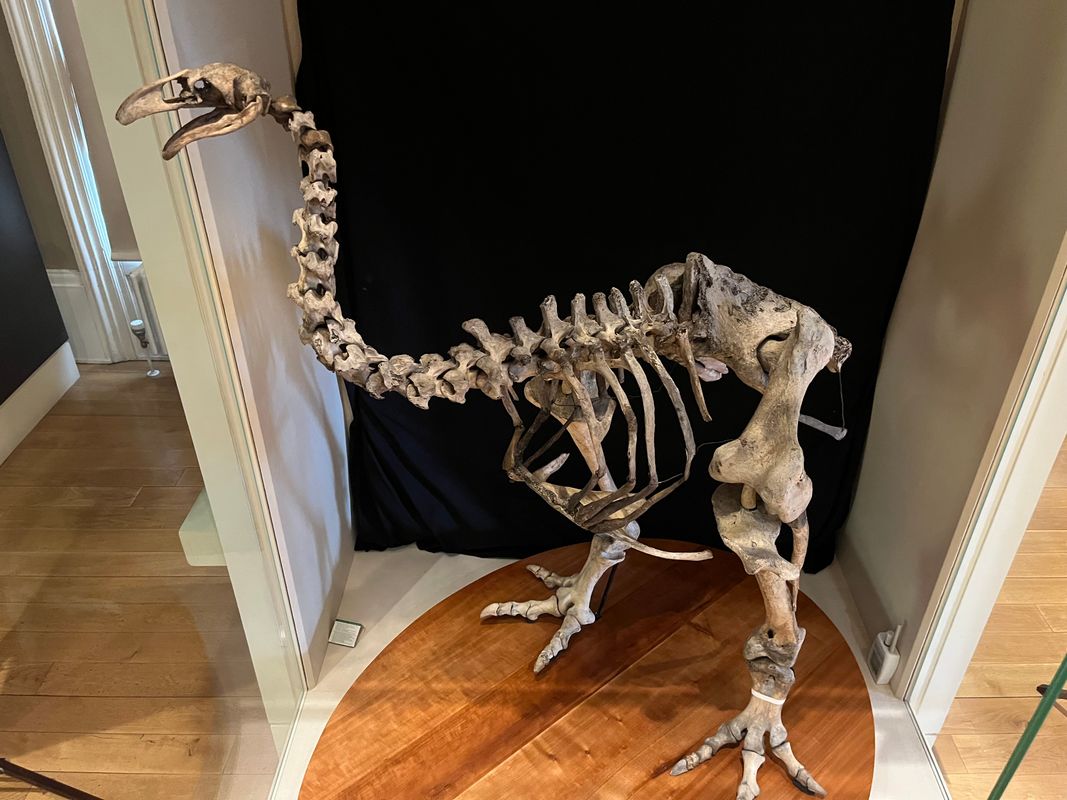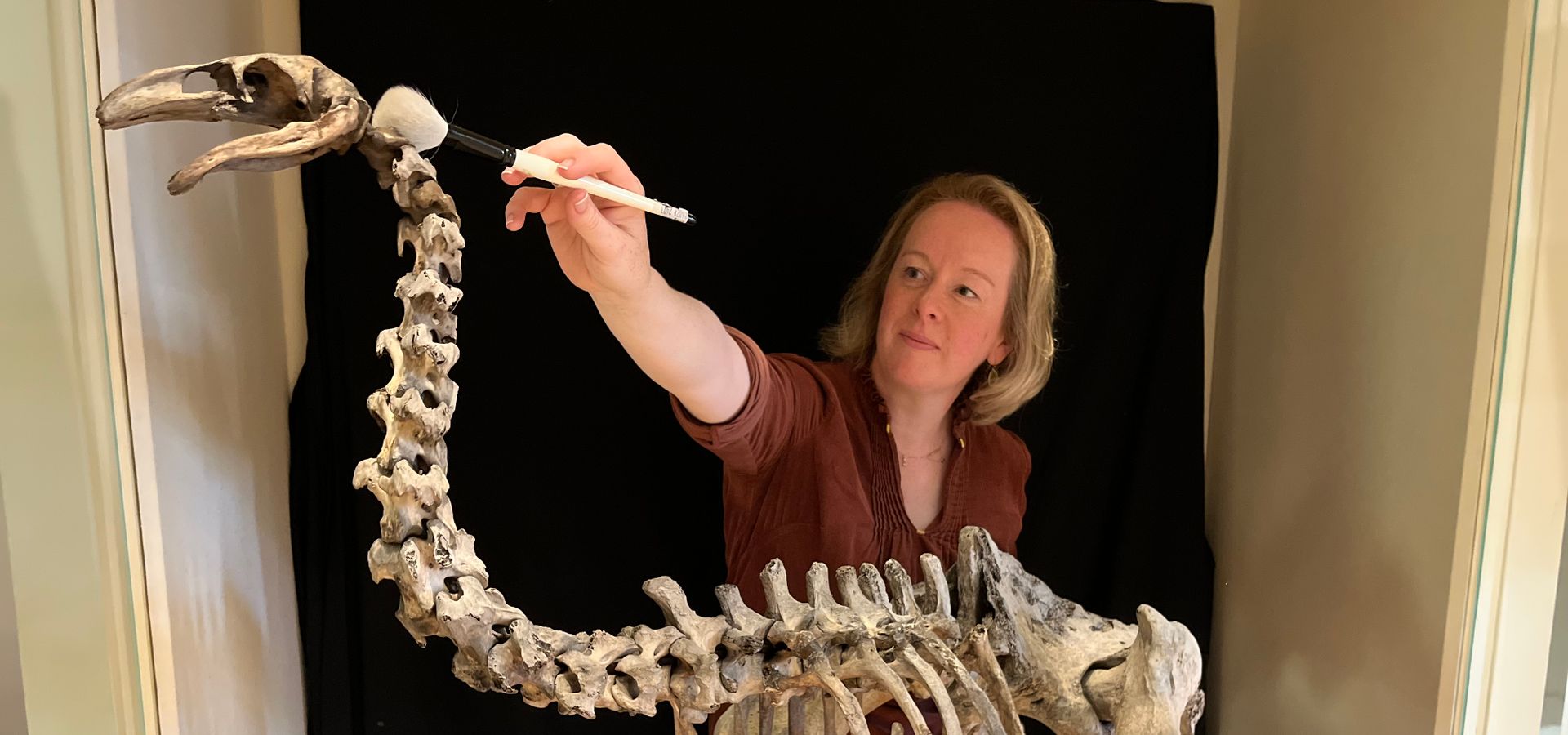
Giant avian clean-up job is moa than meets the eye
Press release; 17 Jul 2025
Each of the skeleton’s delicate bones was meticulously inspected for any signs of dust and deterioration during the condition check.
Driven to extinction by hunting and deforestation around 570 years ago, the remarkable species was one of the largest birds which ever existed, standing almost six feet tall and weighing more than 300 lbs.
Named for its distinctive and enormous feet, the specimen on display in Leeds came to the city in 1868, when it was acquired by the then curator of the Leeds Philosophical and Literary Society Henry Denny.
At that time the skeleton was known to be the only example of the species in the country outside the British Museum in London.
Like many objects in the Leeds collection, it was damaged in 1941 after Philosophical Hall (the city’s museum), where it was originally on display, was bombed during World War II.
In 2011, curators rediscovered the bird’s bones and after a full restoration, they were put on display in Leeds City Museum’s Collectors Cabinet.
Clare Brown, Leeds Museums and Galleries’ curator of natural sciences, said: “The moa is a truly historic specimen which really captures the imagination and brings a completely different world inhabited by extinct and bizarre giants to life.
“It’s also a tangible example of the potentially devastating impact which changing habitats, climates and hunting can have on fragile species and the ecosystems they live in. This was a species which walked the earth for thousands of years, but which completely disappeared within in a relatively short time of interacting with humans.
“Having animals like this on display is not only a fascinating glimpse into a bygone era, it’s a thought-provoking reminder of our responsibility to do what we can to protect the natural world both now and in the future.”
The moa is one of a number of extinct species on display at the museum including a dodo and giant Irish elk.
Councillor Salma Arif, Leeds City Council’s executive member for adult social care, active lifestyles and culture, said: “Having such an impressive collection of objects on display which capture the astonishing diversity of the animal kingdom both past and present can really help visitors understand our role in the natural world.
“It’s important that these historic specimens are preserved and conserved for future generations to see, enjoy and be inspired by.”
For more information about Leeds City Museum, please visit: Leeds City Museum | Leeds Museums and Galleries | Days out and exhibitions

